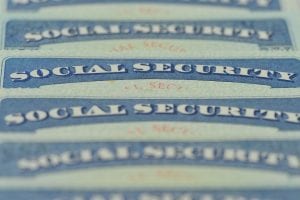How to Claim Death Benefits
Common Sources of Benefits
In addition to life insurance policies, death benefits may be available from a variety of sources. Funeral Directors can help gather the information needed to start the process to claim death benefits. In most cases, you’ll need a copy of the Death Certificate to file for benefits. The following are common sources of benefits and assistance:
- Social security survivor benefits — click here for details
- Veterans’ burial and survivor benefits — click here for details
- Pension/retirement funds
- Workman’s compensation, when death is work-related
- Civil service — federal, state, county, local
- Railroad retirement
- Teacher’s retirement
- Miner’s benefits
- Trade unions
- Credit unions
- Fraternal organizations
- Public aid assistance — state, county, or city.
Social Security Survivor’s Benefits
Social Security is best known for its retirement program, but it also includes survivor benefits. When a deceased worker has paid into Social Security, certain family members may be eligible to claim death benefits for the benefit of survivors. To be eligible, the deceased worker must have credit for work covered by Social Security, ranging from 1.5 to 10 years, depending on their age at death.
The amount of benefits paid to survivors depends on the deceased worker’s average lifetime earnings. The higher the earnings, the greater the amount of benefits. However, a survivor’s earnings may reduce the amount they are entitled to under Social Security.
Monthly benefits
Eligible survivors include:
- A widow or widower age 60 or older (50 if disabled), or at any age if caring for an entitled child who is under 16 or disabled.
- A divorced widow or widower age 60 or older (50 if disabled) if the marriage lasted ten years, or if caring for an entitled child who is under 16 or disabled.
- Unmarried children under age 18 and those aged 19 if they attend a primary or secondary school full time. Under certain circumstances, benefits can be paid to stepchildren, grandchildren, or adopted children.
- Children who were disabled before reaching 22, as long as they remained disabled.
- Dependent parent or parents 62 or older.
Lump-Sum Death Payment
A one-time payment of $255 is paid in addition to the monthly cash benefits described above if the deceased worker has sufficient work credits. The lump-sum death payment is paid in the following priority order:
- A surviving spouse who lived in the same household as the deceased person at the time of death.
- A surviving spouse is eligible for social security benefits on the deceased’s earnings record for the month of death.
- Children are eligible for benefits for the month of death when there is no surviving spouse.
How to Apply
- Death certificate
- Social security numbers — the deceased, the applicant, and dependent children
- Applicant’s birth certificate
- Marriage certificate and divorce papers, as applicable
- W-2 forms or federal self-employment tax return for the deceased worker for the most recent year
- Bank and account number for direct deposit of benefits.
If you are already receiving benefits as a husband or wife on your spouse’s record when she or he dies, immediately report the death to Social Security to have your payments changed to survivor benefits. If you are receiving benefits on your own work record, complete an application, and Social Security will determine if you can receive more under survivor benefits.
More information is available by visiting the Social Security Administration website at www.ssa.gov.
Veterans’ Benefits
Veterans’ benefits are available to U.S. military personnel who die while on active duty.
Eligibility extends to members of Reserve Components, Reserve Officers’ Training Corps, Commissioned Officers of the National Oceanic and Atmospheric Administration, Commissioned Officers of the Public Health Service, and World War II Merchant Mariners. Spouses and dependent children of eligible living or deceased veterans, as well as members of the armed forces, may also be eligible.
Veteran’s benefits apply to both casketed remains and cremated remains, including:
- Free burial grave in a national cemetery
- Opening and closing of the grave and perpetual care
- Free headstones and markers
- Burial flag
- Free grave liner for casketed remains
- Presidential Memorial Certificate
- Lump sum payment up to $300 to families of eligible retiree veterans and up to $1,500 for veterans who die of service-related disability.
Veteran’s Cemeteries
Across the country, the Department of Veterans Affairs maintains 119 national cemeteries (with six more legally mandated) and 33 soldiers’ lots and monument sites. Many states have established veterans’ cemeteries with eligibility requirements similar to those of national cemeteries. The funeral director handling the arrangements usually submits burial requests.
The following information should be provided to the veterans’ cemetery.
- Full name and military rank
- Branch of service
- Social security number
- Service number
- VA claim number, if applicable
- Date and place of birth
- Date and place of death
- Date of retirement or last separation from active duty
- Copy of military separation documents.
Some private cemeteries offer free gravesites for veterans. Be aware that restrictions may apply, and there may be requirements to purchase an additional gravesite or a grave marker.
Under a Department of Defense program, funeral directors can request military funeral honors on behalf of a veteran’s family. Veterans organizations often assist in providing military funeral honors.
For information on burial at sea, contact the United States Navy Mortuary Affairs office toll-free at 1-888-647-6676, and select option 4.
For more information about veterans’ benefits, call the Veterans Affairs office at 800-827-1000 or visit their website at www.va.gov.


